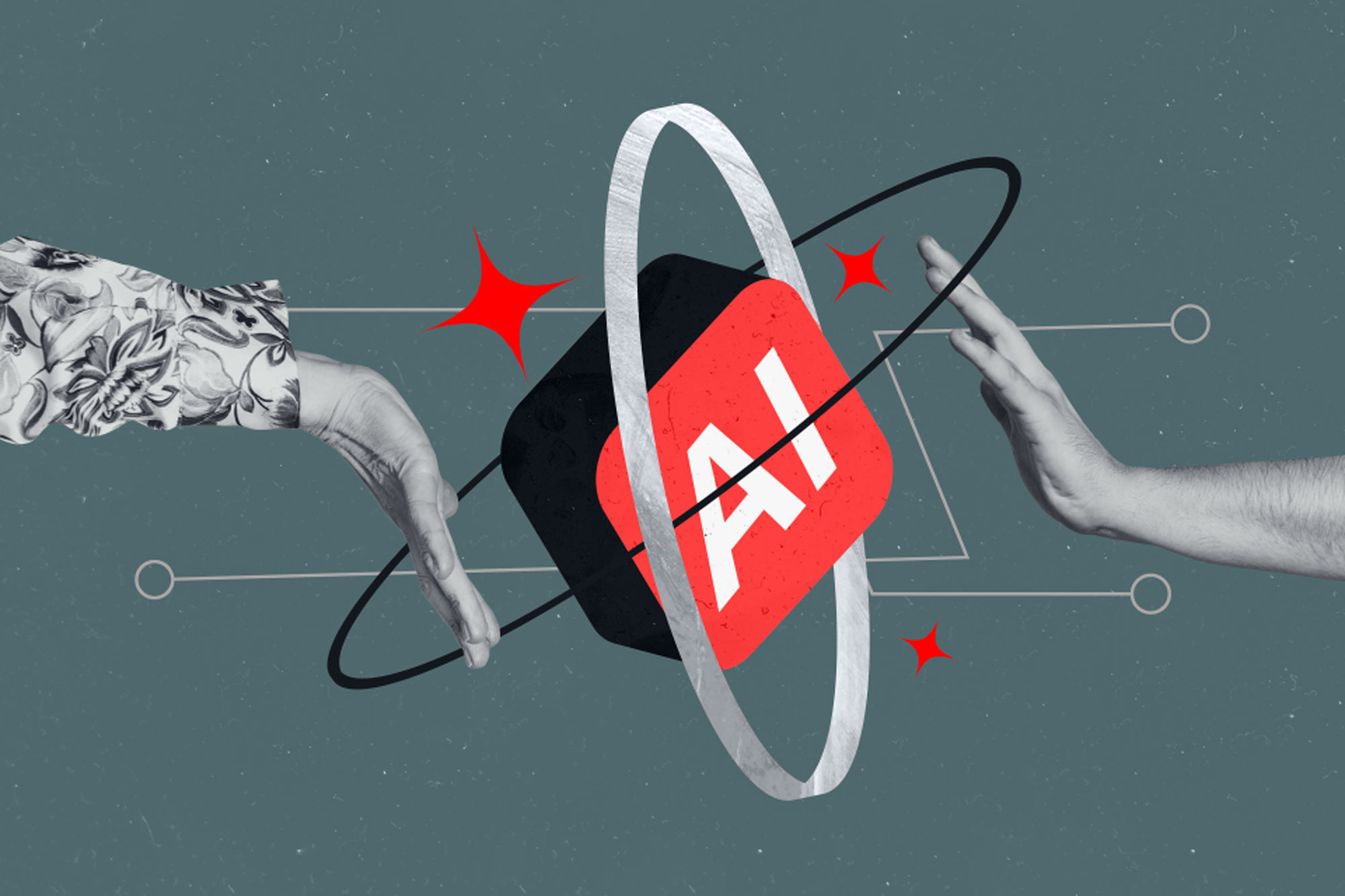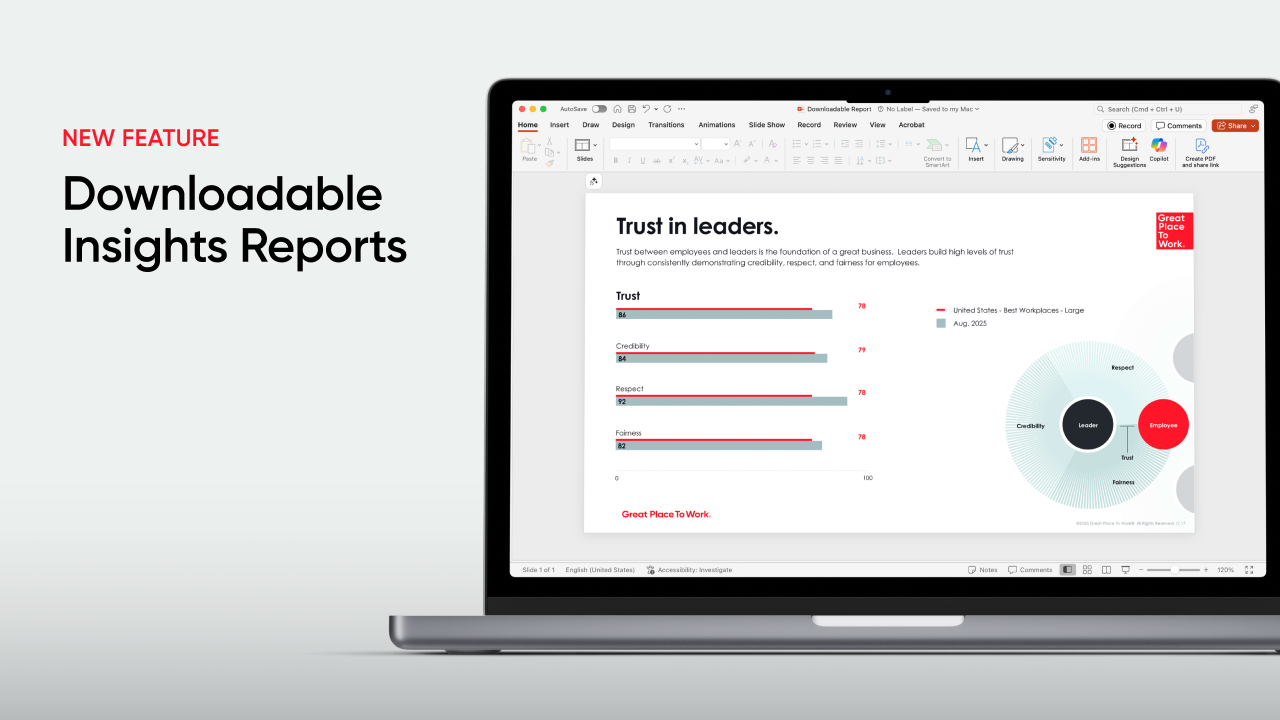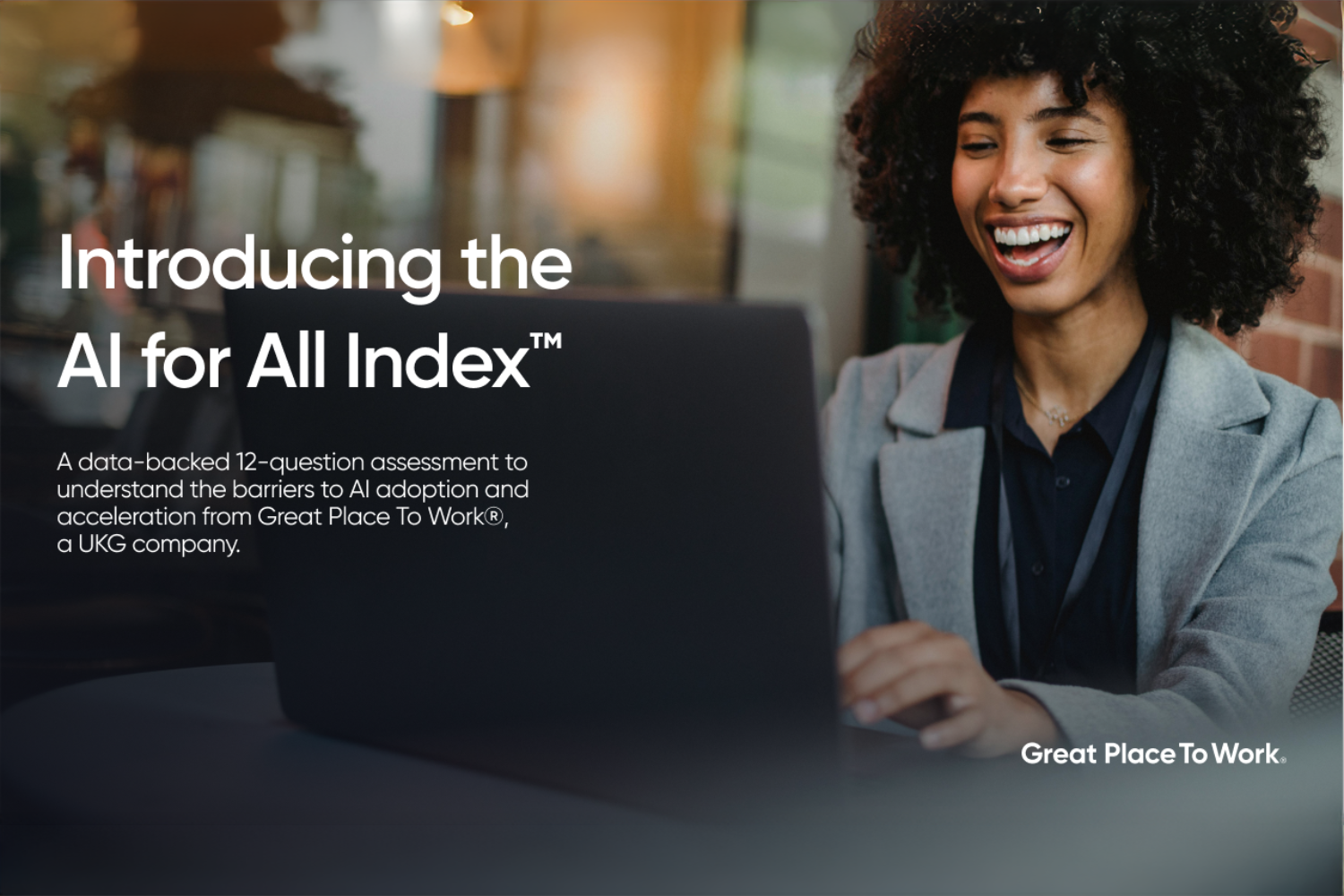AI is everywhere. And much of the conversation surrounding it skews negative: What jobs might disappear?
But that doesn’t have to be the case. In fact, it shouldn’t be the case. AI shouldn’t replace human workers; it should enable them to be more capable and creative.
AI augmentation is when employees and machines work together, enhancing what people can accomplish rather than automating roles and replacing people with machines.
For employers, this presents both an opportunity and a responsibility. To successfully integrate AI, you need to maintain a human-centric approach — involving employees in decision-making, being transparent, and ensuring that AI will enhance workplace culture rather than undermine it.
Trust-centered approach with AI
AI can help teams work faster by streamlining repetitive tasks or helping to distill large amounts of data into manageable chunks. This can help employees to make better decisions and focus their time on what they do best.
But none of that potential matters if your people don't trust the technology or the way you're implementing it.
Trust is at the heart of every great workplace, and it determines whether new initiatives, such as implementing AI, will succeed or fail. Without trust, you may see slower adoption as employees resist using new tools. Or you may encounter more mistakes as people work around systems they don't understand.
The key is transparent communication. Share why you’re bringing in AI, how it will affect day-to-day work, and what support you’ll provide. Be honest about challenges and potential pushback. When employees understand the “why” behind changes, they’re more likely to embrace them.
Most importantly, frame AI as a tool for unlocking your team’s potential — not as a replacement for human judgment and creativity. Your people bring emotional intelligence, critical thinking, and relationship-building skills that no algorithm can replicate. AI should enhance these strengths, not compete with them.
Understanding AI augmentation in the workplace
AI augmentation is about making your people better at what they do. It’s using AI to handle routine tasks, provide insights, and help employees make better decisions, so they have more time to focus on creative problem-solving and strategic thinking.
This is different from automation, which takes over entire processes, completely removing the human element. An AI-augmented workplace includes automation as a tool, not a replacement for human intelligence.
For example, you might use AI to summarize research, locate data points, or generate templates for reports, so that employees can better focus their time on more meaningful work, like analyzing data, mentoring team members, or building relationships with customers.
When you approach AI this way, it supports a positive workplace culture. Employees feel empowered rather than threatened because they’re gaining new capabilities instead of losing responsibilities.
Key areas where AI increases employee capabilities
Automating repetitive tasks
When employees are less bogged down in mundane tasks, they have more capacity to tackle the kinds of tasks that can only be achieved through human creativity and logic.
You could use AI for things like tracking inventory and then automatically reordering supplies as needed. Or to take large amounts of data and input them into easy-to-read spreadsheets. Creating a team’s schedule for the week could also be automated.
These tasks can otherwise be huge drains on employees’ and managers’ time.
Enhancing decision-making
While decisions shouldn’t be made solely with AI, you can use AI to gather, summarize, and distill information in a way that makes decision-making easier and more data-driven.
For example, you could gather the results from your Trust Index™ Survey, feed them into an AI system, and get suggested action plans that you can tailor to best address your company’s needs.
Or you could generate new ideas for culture initiatives based on employee feedback. The team at Hackensack Meridian Health did this with open-ended comments from their survey. They were able to sort the feedback through AI — something that had previously been done manually — and use it to design their team member value proposition.
Personalizing learning and development
AI can be used to create personalized training programs. Instead of a one-size-fits-all approach, you can use AI to analyze an employee’s current skills, learning style, and performance to then create a customized development path.
This way, the training is more relevant and appropriately challenging, allowing employees to be more engaged and develop their skills more quickly.
For example, software company ServiceNow offers a learning platform that lets employees map their career paths, set goals, and identify skill gaps. AI can then recommend programs that best meet the employee’s personal goals.
Check out how 100 Best Companies are training their workforce for AI.
Improving employee communication
Everyone processes information differently — some employees may love written summaries after verbal meetings, while others prefer visual representations of complex data. Some may struggle to stay focused in long sessions or need extra time to process information before contributing to discussions.
AI can streamline internal communication and make it more accessible. For example:
- Company information chatbots can provide employees with instant answers about policies, benefits, and procedures.
- Transcription tools can automatically summarize or take notes during meetings, to be more neuro-inclusive and easily shared with the broader team.
- Real-time translation aids can help diverse teams collaborate more effectively across languages.
However, remember that AI cannot replace human empathy and connection. Avoid using it to write sensitive messages at times when employees want to hear directly from their leaders.
Implementing AI augmentation: Best practices
1. Identify your pain points
Start by identifying specific pain points where AI can genuinely help your employees work better. Don’t implement AI just because it’s trendy — focus on areas where your team spends too much time on repetitive tasks or struggles to access the information they need. Talk to your employees about their daily frustrations and listen for opportunities.
2. Solicit employee feedback
Involve your employees in the selection and testing process. They’re the ones who will use these tools every day, so their input is invaluable. You could have small pilot groups test the AI and provide feedback before rolling it out company-wide.
3. Get leadership support
Leaders can play a critical role in the roll-out by modeling curiosity and openness to learning. AI is still a scary concept for many, and when leaders admit they’re still figuring it out, this creates psychological safety for everyone to experiment and make mistakes. Give employees time to adapt and listen to their concerns.
4. Maintain your purpose
Most importantly, don’t lose touch with your organization’s purpose or move too quickly that you overlook the risks — AI isn’t perfect. These kinds of moves can quickly undermine employee trust in AI.
Overcoming challenges in AI augmentation
Employees may be nervous about adopting AI. They may fear their job will become obsolete or that their personal data (or customers’ data) could be compromised.
The key is to address these concerns head-on with clear, open communication. Be specific about what AI will and won’t do in your organization. Explain what information is processed, where it’s stored, and what safeguards are in place.
In a UKG survey of 4,000 employees, three out of four employees said they would be excited to use AI at work — but only if their company was more transparent about how AI could improve their workflow and how their organization was using it.
Here are some ways you can boost employee trust in AI, based on Great Place To Work® research:
- Involve employees in decision-making. When employees say they have a voice in decisions that affect them, they are 20% more likely to adapt to AI quickly.
- Ensure employees get a fair share of company profits. Employees are 60% more likely to embrace AI when they feel they are fairly compensated and valued.
- Offer upskilling and reskilling opportunities. When employees receive adequate training and development, they are 20% more likely to adopt AI systems. See how companies are using AI to upskill employees.
Measuring the impact of AI augmentation
To know if your AI augmentation efforts are truly working, you need to track the right metrics. Look at:
- Employee trust: Trust is the magic ingredient in the employee experience. Survey employees to see how they feel about the company’s use of AI.
- Confidence in leadership: Do employees believe that leaders are making sound decisions about AI? Research shows that confidence in leaders fosters innovation.
- Innovation velocity ratio: This is how many employees experience meaningful opportunities to innovate versus those who don’t.
Employee feedback is your most valuable tool for refining AI implementation. Ask specific questions about which AI tools are genuinely helpful versus which feel cumbersome or intrusive. Pay attention to patterns across different departments and job roles.
Most importantly, act on what you learn. When employees see that their feedback leads to real changes in how AI is deployed, it builds trust and encourages more honest input in the future.
Case studies: Successful AI augmentation in action
Brightview Senior Living
To better ensure residents’ safety, Brightview Senior Living mounted AI-based cameras that learn residents’ movements and detect when a fall happens. If a fall is detected, the camera alerts caregivers via a mobile app and provides the ability to review video footage of the exact moment.
Brightview’s caregivers now have an average response time of under three minutes after a fall happens — versus the industry average of 40 minutes. Not only this, but it’s also enabled caregivers to be more proactive in preventing falls. By studying the videos, caregivers have been able to make suggestions about improving things like furniture placement and bed height.
This initiative has greatly empowered Brightview caregivers, who often feel anxious about residents falling. With the AI cameras, they can feel more confident in the quality of care they’re providing.
Camden Property Trust
For Camden Property Trust, AI has helped call agents have a better understanding of customer attitudes and perceptions.
The company uses speech and text analytics to transcribe customer interactions, analyze sentiments, and identify key topics. This allows agents to identify potential challenges early and preemptively solve them, thereby focusing on the empathetic aspects of customer service.
As a result, agents feel more engaged, empowered, and valued in their roles.
Capital One
To enhance the customer service experience for both customers and agents, Capital One built a proprietary generative AI tool that helps agents get access to information for resolving customer questions more quickly and efficiently.
For example, if a customer calls to ask whether a declined card transaction will count against their daily card limit, agents can use this tool to quickly search for the relevant information in real time.
The future of work: AI and human collaboration
The most commonly thought-of use case for AI is to automate repetitive tasks. But it can be used for so much more.
Teleperformance uses AI to monitor employee data for risk factors. The company’s retention specialists can then do proactive outreach to see what’s going on. Hilton has invested in an employee mentoring program that uses AI to match employees with mentors inside the organization.
Other options could be a sales team using an AI chatbot to practice their selling skills or a customer service team training to manage complaints. Or using AI to check company communications and job descriptions for any biased language.
Within all these possibilities, one thing remains: the human connection. These use cases enhance human capabilities rather than replace them.
Build a high-trust AI-enabled workplace
The goal of AI isn’t to transform your workplace overnight — it’s to thoughtfully find ways to make your employees’ work more meaningful and effective. When done right, AI augmentation strengthens your culture by showing employees that you’re invested in helping them succeed.
Great Place To Work’s employee engagement tools can help you ensure your own AI-augmented workplace is meeting the needs of both your business and your employees.
Elevate employee experience
Ensure your best people thrive and stay. Benefit from continuous culture support and our proven model to keep your team committed.











